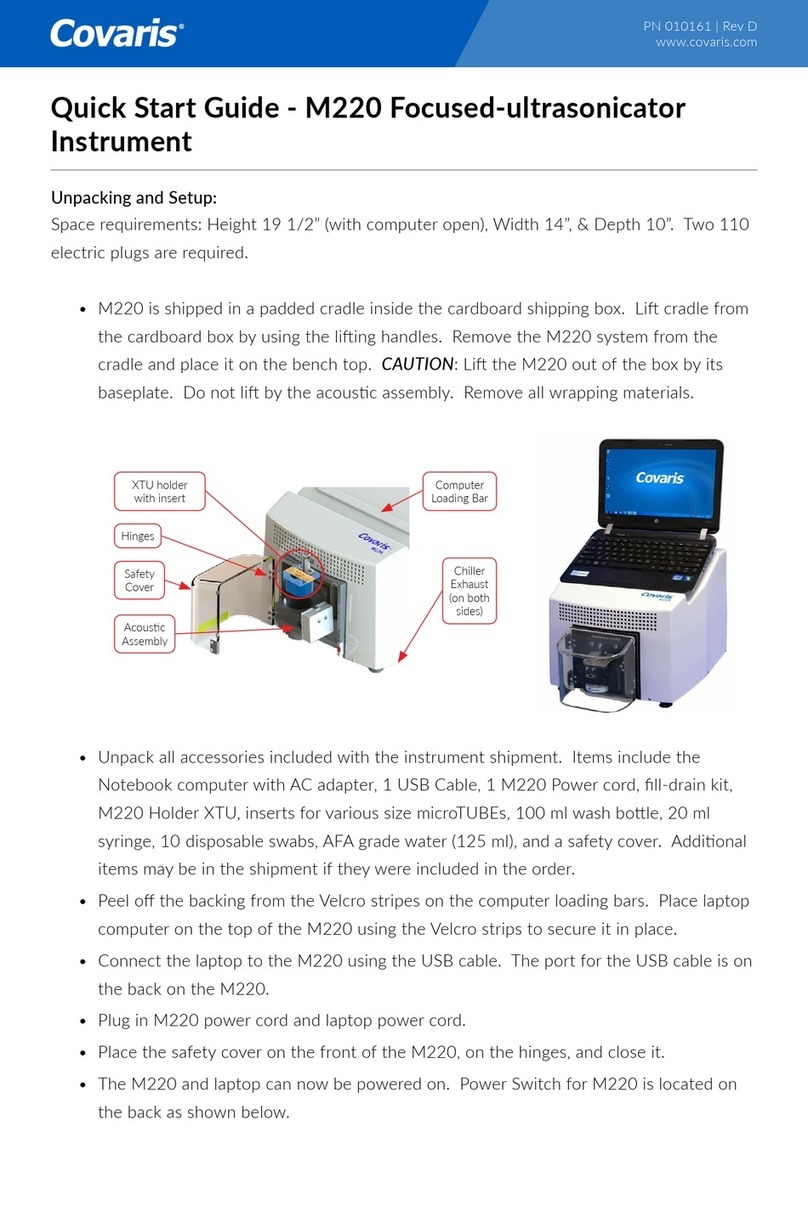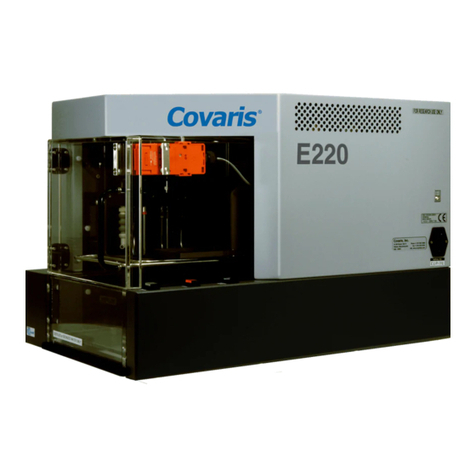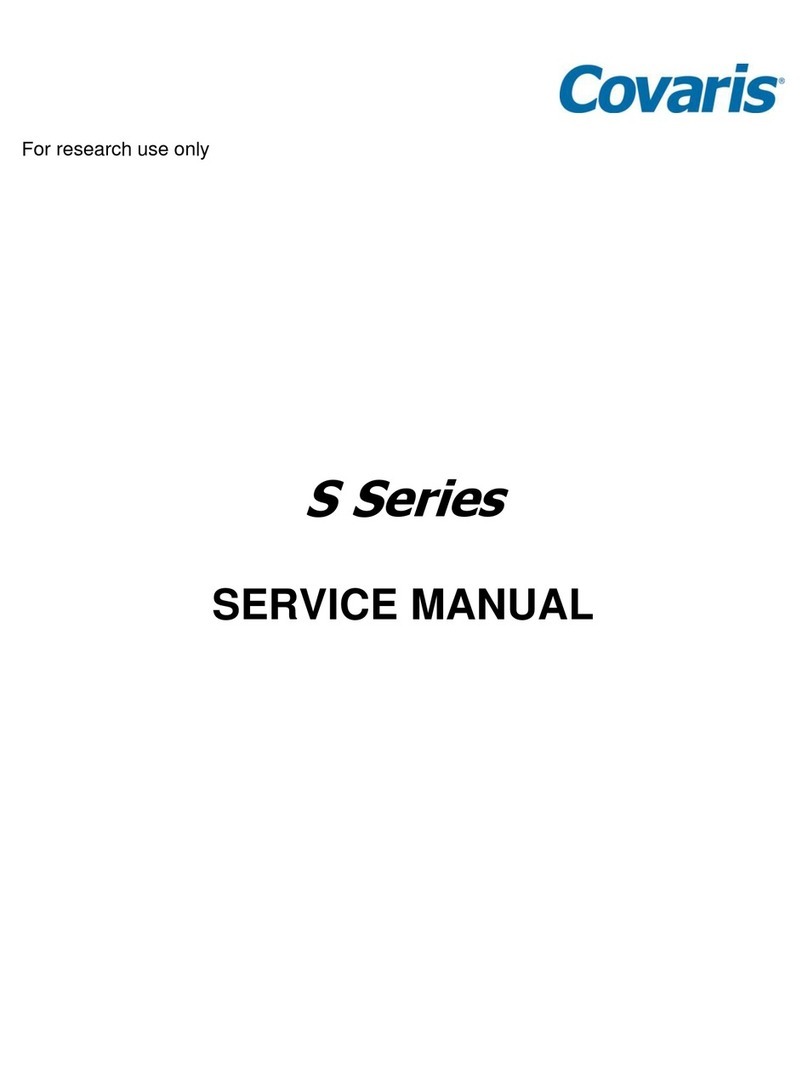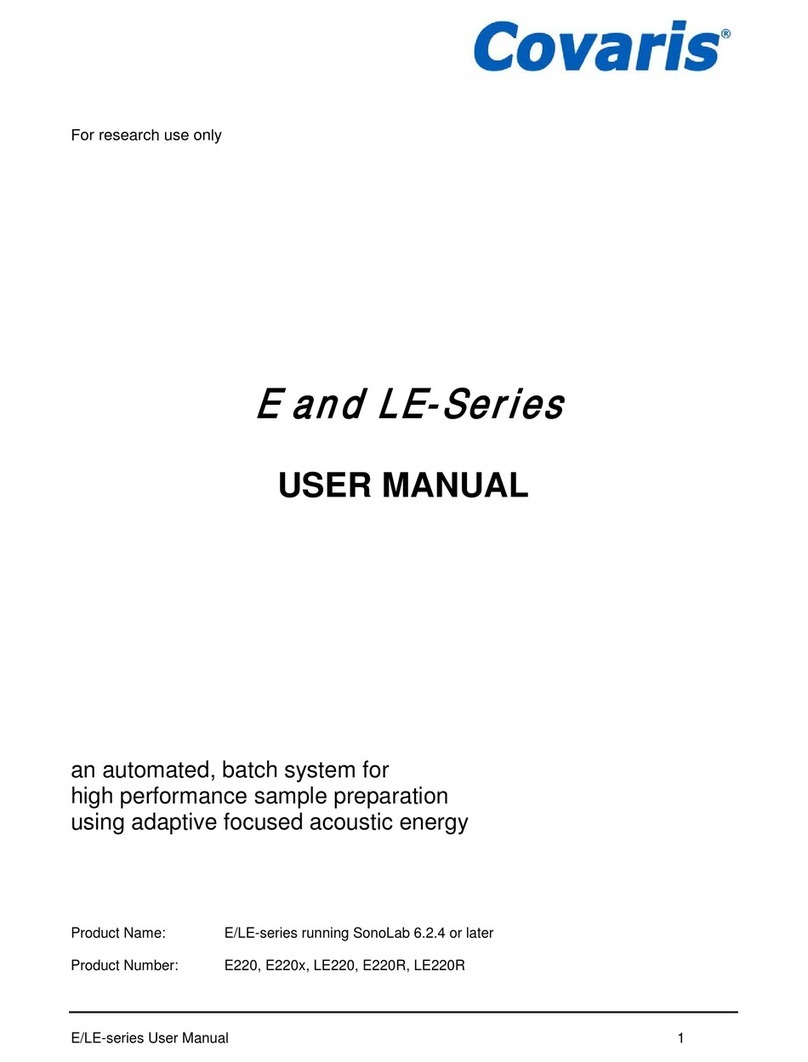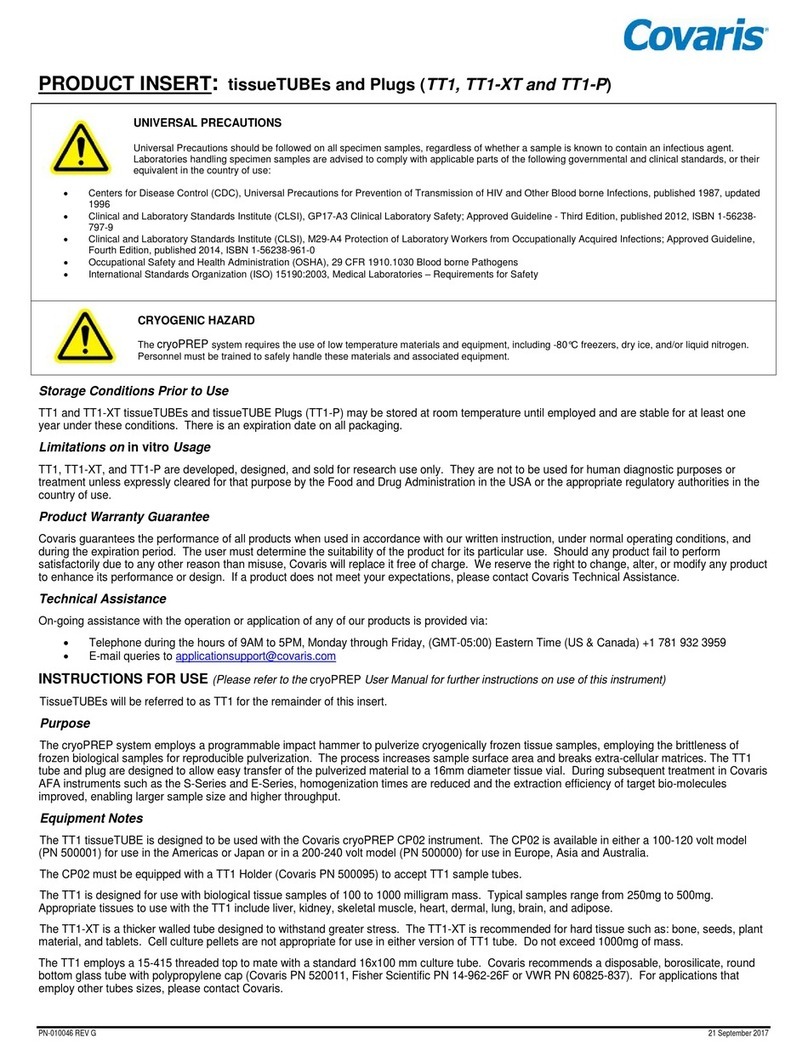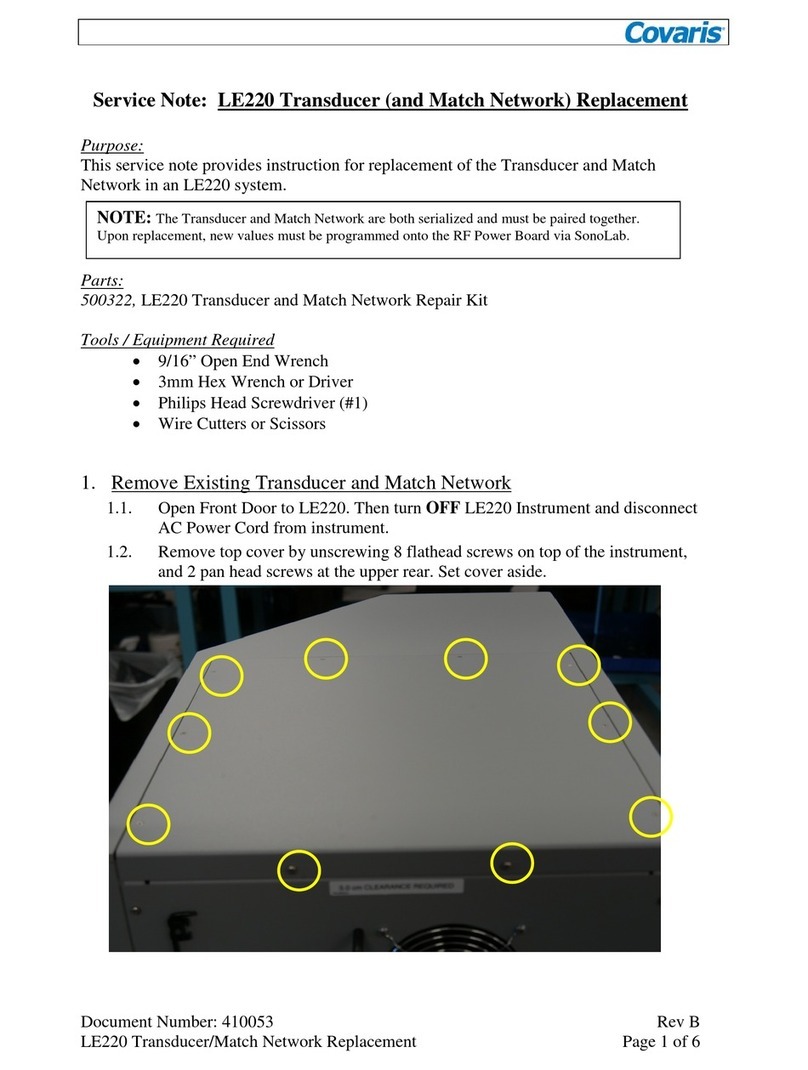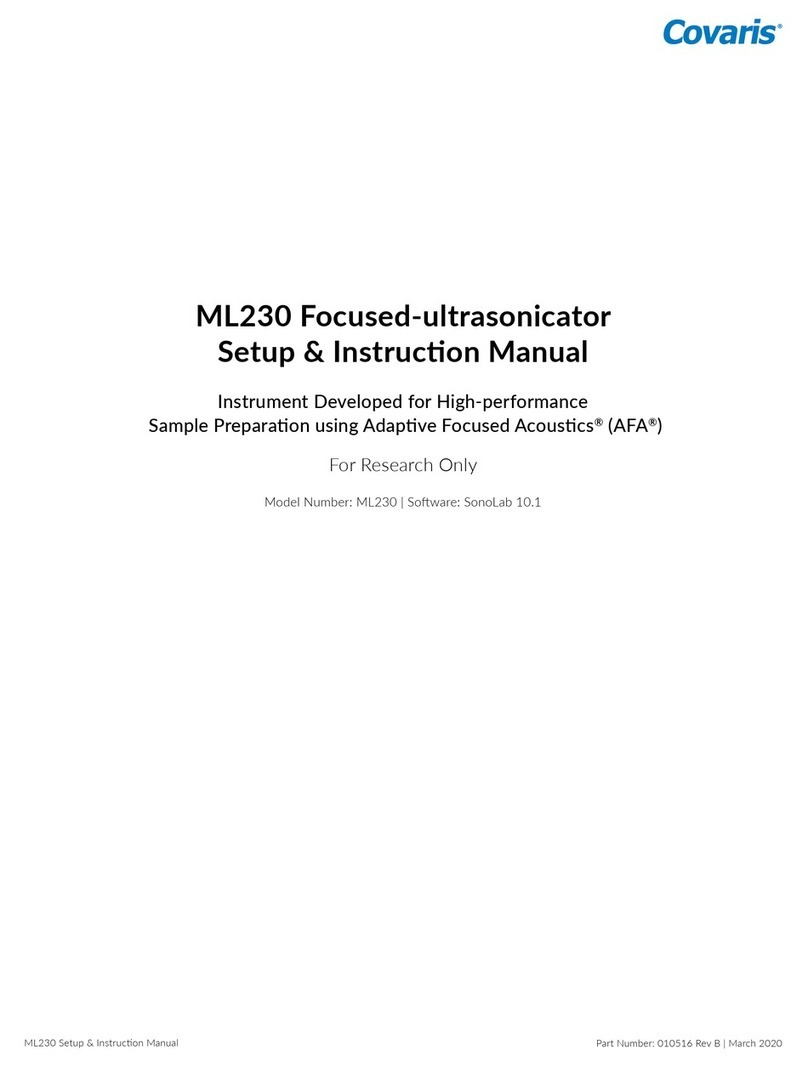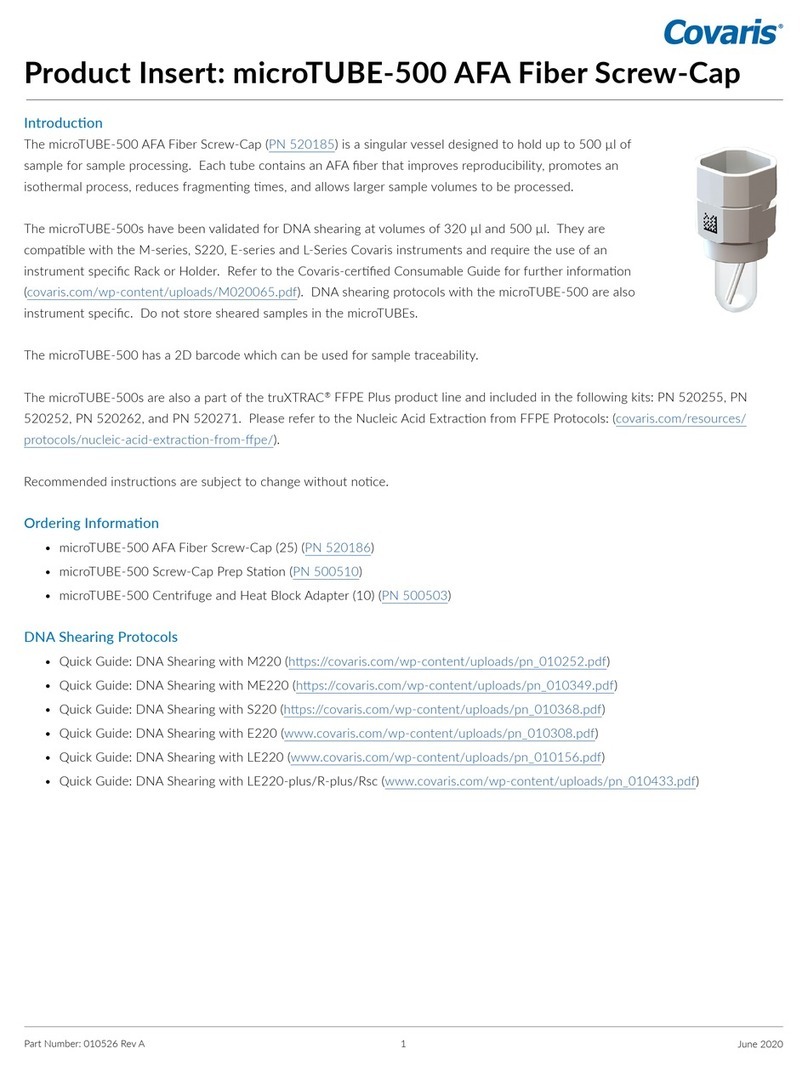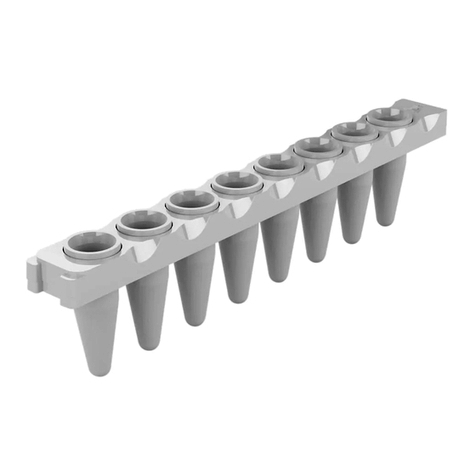
E220 evolution User Manual Page 5
TABLE OF CONTENTS
1.0 INTRODUCTION................................................................................................................................6
1.1 Overview of the User Manual.........................................................................................................6
1.2 The E220 evolution and the Covaris Process................................................................................6
2.0 INSTALLATION AND SETUP............................................................................................................7
2.1 Assembly........................................................................................................................................7
2.2 Installation......................................................................................................................................8
3.0 GETTING STARTED .......................................................................................................................11
3.1 Fill the Water Bath........................................................................................................................11
3.2 Start the System...........................................................................................................................11
3.3 The SonoLab Run Screen - Running a Method...........................................................................13
3.4 System Shutdown ........................................................................................................................17
3.5 Temperature Control....................................................................................................................18
3.6 Degas System..............................................................................................................................19
4.0 SonoLab™ APPLICATION SOFTWARE.........................................................................................19
4.1 Create and Edit Methods .............................................................................................................20
4.2 Temperature Tab..........................................................................................................................25
4.3 Saving Methods in Folders...........................................................................................................26
4.4History Tab...................................................................................................................................27
4.5 Setup Screen................................................................................................................................27
4.6 Maintenance Screen ....................................................................................................................32
4.7 About Tab.....................................................................................................................................33
4.8 Motion Tab ...................................................................................................................................33
5.0 SYSTEM SPECIFICATIONS ...........................................................................................................35
6.0 MAINTENANCE...............................................................................................................................36
6.1 Cooling Air Intake.........................................................................................................................36
6.2 Water Bath ...................................................................................................................................36
6.3 Transducer...................................................................................................................................36
6.4 Safety System..............................................................................................................................36
6.5 Degassing System .......................................................................................................................36
6.6 Cleaning the System....................................................................................................................37
7.0 TROUBLESHOOTING.....................................................................................................................38
Appendix A: Suggested E220 evolution IQ / OQ / PQ ................................................................................40
Appendix B: E Series Site or Transport Preparation...................................................................................46
Appendix C: Installing SonoLab Software, Firmware and Instrument Drivers............................................48
Appendix D: Recirculating Chiller................................................................................................................53
Appendix E: Humidity and Water Management in Covaris E and LE Systems ……………………………..55
